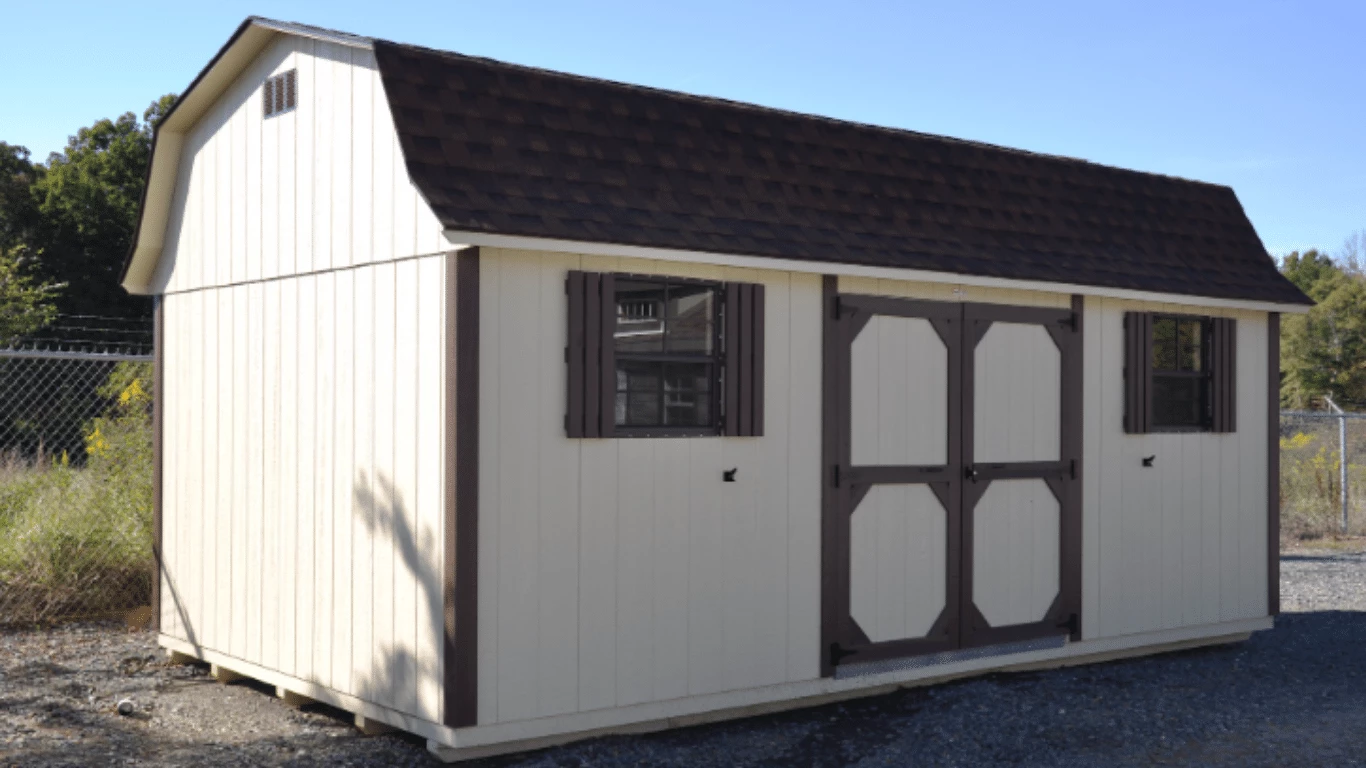Barns are more than just storage spaces. They’re landmarks. They stand proudly across rural landscapes, telling stories of hard work, tradition, and the personalities of those who built them. But there’s a secret ingredient that often goes unnoticed—the color.
Paint may seem like a cosmetic afterthought, but choosing the right color for a high barn goes far beyond aesthetics. Color defines how a barn ages, how it fits within the landscape, and even how people perceive its size. If you’ve ever driven through the countryside and felt your eyes drawn to a bold red barn or a sleek white one, you know firsthand how much color speaks without words.
So, let’s peel back the layers of history and practicality to explore why the color of a barn matters more than you think.
What is the Historical Reason For Red Barns?
If you close your eyes and picture a barn, chances are you’re seeing red. That’s not an accident—it’s history. But why red?
In the 18th and 19th centuries, farmers didn’t have the luxury of running to a hardware store for gallons of pre-mixed paint. They made their own protective coatings using what they had on hand. A typical recipe included:
- Linseed oil: Derived from flaxseed, used as a base.
- Milk or lime: Added to help bind the mixture.
- Rust (ferrous oxide): This gave the paint a rich red color and, more importantly, acted as a preservative to protect the wood from mold and fungi.
The result? A deep, earthy red that was affordable, durable, and practical. Red barns became the standard, not for style but for survival. Over time, though, the color red became iconic—a visual shorthand for agriculture itself.
Today, many barn owners still paint their structures red not because they have to, but because it connects them to a heritage of hardworking farmers who built America’s backbone.
How Do Different Colors Change The Perception Of A High Barn’s Size?
Color doesn’t just affect how something looks—it affects how big or small we think it is. That’s why the choice of paint for a high barn can be surprisingly strategic.
- Dark colors (like deep red, brown, or green): These tend to make barns appear smaller and more compact. A massive high barn painted in a darker shade blends more subtly into the surroundings.
- Light colors (like white, cream, or pale gray): These make barns appear larger and more prominent. They reflect light, emphasizing height and width.
- Bold or unusual colors (like blue or yellow): These stand out immediately, drawing attention regardless of size. They can make a smaller barn feel more significant simply by catching the eye.
So if a farmer wanted to minimize the imposing height of a barn, a darker paint choice helped it blend into the environment. Meanwhile, lighter barns stood as proud, commanding structures—almost a declaration of prosperity.
It’s fascinating to think that a simple decision about color can alter the way passersby perceive an entire building.
Does The Color of a Barn Affect The Longevity of The Wood?
Here’s where color gets practical again. Paint isn’t just for looks—it’s armor. The shade and quality of paint can directly impact how well a barn withstands the test of time.
- Darker paints absorb more heat: This can cause wood to expand and contract, sometimes shortening its lifespan if the structure isn’t ventilated well.
- Lighter paints reflect heat: Helping barns stay cooler and reducing warping or cracking of wood in hot climates.
- Protective pigments: Historically, red pigments (thanks to iron oxide) were naturally resistant to mold and decay, extending wood longevity.
- Modern paint technology: Today, high-quality paints and sealants—regardless of color—help protect barns from UV rays, moisture, pests, and rot.
The bottom line? Yes, color choice plays a role in longevity, but it’s not just about looks. It’s about how certain pigments interact with sun exposure and how they shield the wood underneath. For a barn meant to last generations, paint color isn’t just decoration—it’s a preservation strategy.
How Does Barn Color Influence The Surrounding Agricultural Landscape?
Drive through any farming region, and you’ll notice something: barns don’t exist in isolation. They’re part of a bigger picture. And their color plays a surprisingly big role in how the entire agricultural landscape feels.
- Cultural Identity: A row of red barns in the Midwest instantly conjures images of American farming tradition. White barns in the Northeast often reflect colonial heritage.
- Visual Harmony: Barns painted in earth tones—greens, browns, grays—blend with fields and forests, creating a softer, more natural landscape.
- Tourism and Photography: Bright barns become focal points for travelers and photographers. Some towns even market them as attractions, boosting local tourism.
- Community Pride: Neatly painted barns (whatever the color) reflect a sense of care and pride. A fresh coat of paint communicates that a farm—and by extension, the community—is thriving.
Colors don’t just affect how we see barns; they affect how we feel about the land itself. A well-painted barn elevates the whole landscape, turning fields into postcards and communities into destinations.
Why Color Choice is About More Than Paint
When you put all of these factors together—history, perception, longevity, and landscape—it becomes clear that barn colors aren’t just a matter of personal preference. They’re symbols.
A painted high barn tells the story of the people who built it, the community it serves, and the future it represents. Choosing the right color means choosing how that story gets told for years to come.
Think about it this way: a barn isn’t just a building. It’s a statement. And paint is the voice.
From the rich history of red barns to the way modern colors influence perception and community pride, it’s clear that barn paint isn’t trivial. It’s tradition, practicality, and storytelling all wrapped up in one.
So, the next time you pass by a high barn with a fresh coat of paint, take a moment to appreciate it. That color wasn’t chosen lightly—it was chosen to honor history, protect wood, influence perception, and harmonize with the land.
It’s a reminder that even the simplest choices, like a bucket of paint, can have hidden charms and lasting impacts.
Bring New Life to Your Barn with Better Built Structures
At Better Built Structures, we know a barn isn’t just a building—it’s a legacy. That’s why we help our customers choose not just a durable structure, but the perfect color to make it stand out or blend beautifully with the land. From timeless reds to modern custom shades, we build barns that last and look stunning.
Ready to give your high barn a fresh look that honors tradition while protecting your investment? Contact Better Built Structures today and let’s bring your barn’s hidden charms to life with color that truly matters.






